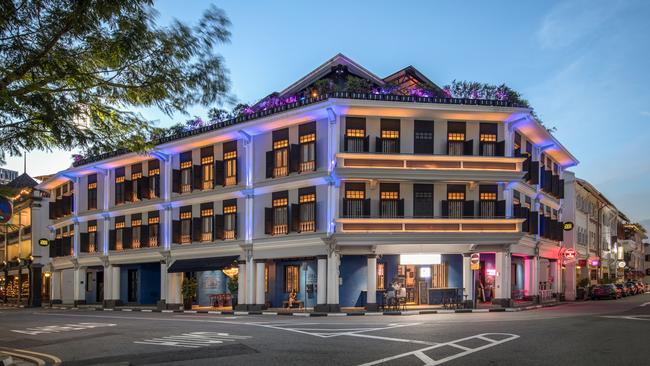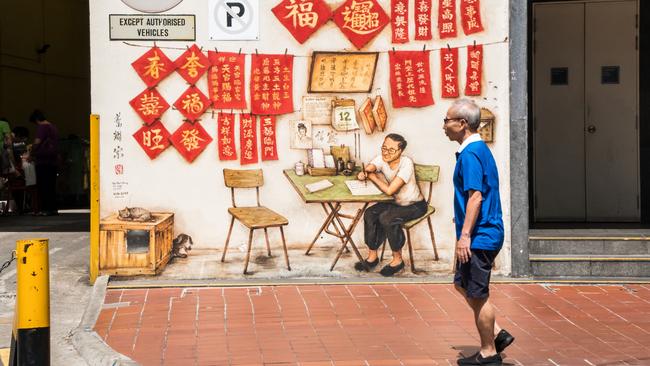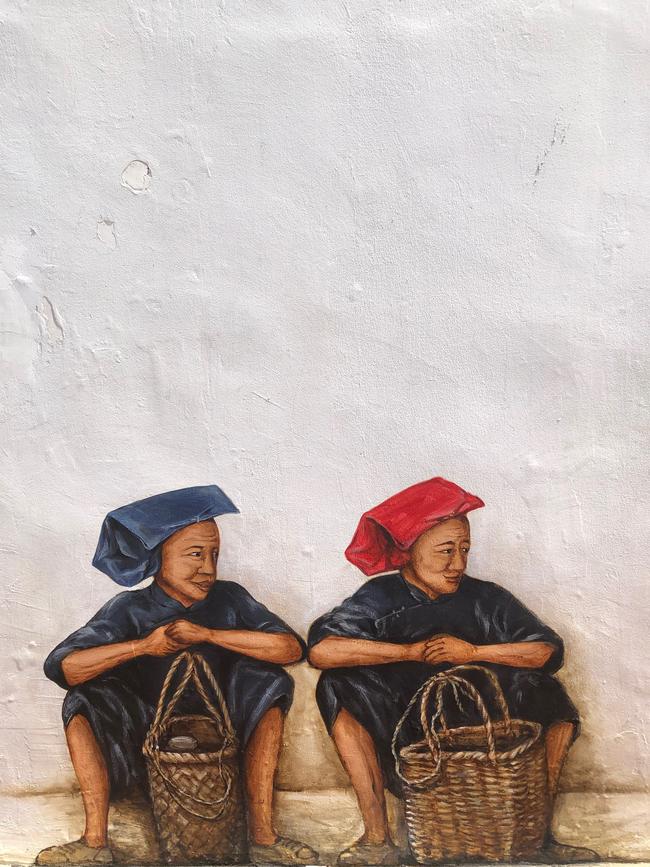What to do in Chinatown, Singapore
The city state’s Chinatown district feels exotic and steeped in unknowable traditions.

I can almost smell the morning espresso brewing at Maxi Coffee Bar. A strong macchiato and airy madeleine await me. Ensconced in a snug guestroom at Singapore’s Ann Siang House, I am within steps of some of the best cafes, clubs, street markets and attractions in Chinatown’s Telok Ayer precinct. This proximity is important as my 20-room mini-hotel, flanked by a colonnade across a wide corner, is run in the style of serviced apartments and offers a DIY communal kitchen, laundry and socialisation spaces but no fancy room service.
That might seem a lean prospect but my relatively spacious guestroom has a microwave, kitchen equipment, kettle and small fridge, plus all the technology bells and whistles, and a big wall-mounted TV. The kingsize bed is so comfy it must have hypnotic qualities, as even the presumably rowdy after-dark weekend crowds on nearby Club St don’t wake me. The bathroom is large and equipped with good-smelling Ashley & Co organic amenities from New Zealand (cue wafts of basil leaf, lemongrass and wild ginger) and the royal blue splashes of colour on walls and woodwork are rather posh and perfect.

I like the classic wooden shutters on tall windows and the interior design nods to the 1920s-built mansion’s past as a “clan house” for new arrivals to the Chinese community in the early decades of last century.
Ann Siang House is a member of The Unlimited Collection by Oakwood and features four accommodation categories, from 35sq m to 61sq m; top-tariff studio premier configurations include a balcony, and all styles have iron and board, daily housekeeping and complimentary wi-fi. There’s a reception desk (not always attended) and helpful staff present in the mornings who’ll provide info on local attractions. “Go to Ann Siang Hill and Telok Ayer Green. Try NOM Gelato. Check the Chinatown Heritage Centre on Pagoda St and see how residents lived in the 1950s. How about the Musical Box Museum in Thian Hock Keng Temple on Telok Ayer St?” All of which is good advice and acted upon with pleasure.

The location of Telok Ayer is a “subdistrict” of Chinatown but the enclave was a clove and nutmeg plantation in colonial times and Ann Siang Rd is hilly, with slightly treacherous pavement steps. Below this eminence lies a precinct of laneways, some featuring clever and often quirky street art with cultural references, and a plethora of stores selling the likes of yam crisps, pandan cakes, instant noodles “with crayfish taste” and vacuum-packed slices of “honey mango”.
Heading along Smith St I pass tiny shops with green-tiled overhangs from which patterned festival lanterns are bobbing, their tassels shifting in the breeze. Zigzagging about on South Bridge Rd, I am almost brave enough to knock on the door of the Zi Jing Ge Moral Uplifting Society, next to a jewellery store with gleaming displays. It all feels exotic and steeped in unknowable traditions.
The sign outside a “healthful centre” promises cupping, ear candling and “free consultation for elderly” (I’m momentarily tempted). I investigate noisy malls packed with clothing stores and pause at bubble tea booths and the scarlet-painted Nanyang Old Coffee Museum (a real curiosity shop and purveyor of myriad strong but sweetish brews).
I admire displays of lacquered oil-paper umbrellas and pause to wonder what goes on behind the sign for Love Handle (“Asia’s first plant-based butcher”, as it transpires). I like the easy companionship of Xin Sheng Poets Society next door to the Singapore Association of Writers, and smile at the dual announcement of the Harmonica Aficionados Society and Shicheng Calligraphy & Seal-carving Society. Things are more straightforward back on South Bridge Rd amid the flaky custard tarts of Tong Heng Traditional Cantonese Pastries (“Bringing you joy in a bite for every occasion since our founding in 1935”) or at the funky Cake Spade, where durian specialties are easily eschewed in favour of matcha cheesecake so yummy that an extra slice makes its way back to Room 210 at Ann Siang House.

The colours of Chinatown’s buildings are often deliberately festive but chalky pastels soften the mix among the shophouses (literally, retail or wholesale business downstairs and living quarters above), although many of these flat-fronted buildings have been adapted to galleries and studios in a quarter that now has a buzzy and creative vibe. Gone are the kerbside letter-writers, calligraphers and fortune-tellers I recall from decades past.
Turn almost any corner and look up, and up, at the glossy behemoths that dominate Singapore’s skyline and Chinatown will shrink before your eyes. Behold the 27-storey quasi rocket-shaped Oasis Hotel festooned with sky gardens of draped greenery, resembling an Ent from Lord of the Rings. Time to duck for cover in Maxwell Food Centre, originally a wet market and now a no-frills dining destination, and hand over less than $2 for a sugar cane juice from Hu Ru (“It’s time!”) Beverages. Gordon Ramsay once famously popped by the Tian Tian Hainanese Chicken Rice stall to grab the recipe for Singapore’s unofficial national dish and a local obsession.
This bustling centre, covered by a tall girder roof, is a cheap, convivial spot for a hawker-style meal, as clean and hygienic as you’d expect in the city-state, although some outlets have not yet opened after Covid closures.
A bowl of xiao long bao dumplings from Ting Xin Ju and a fistful of soft palm sugar and tapioca cake from Heng Heng is a feast worth considering. Plonk it all down on a bare table but don’t try and draw up a stool as the rock-hard seating is bolted to the cement floor.
This is a friendly neighbourhood to explore on foot and by day two I’m on first-name terms with the barista at Maxi’s. I’m pleased to have booked accommodation that’s more residential in feel than a conventional hotel as I’m forced out and about to explore the surrounds and check dining options. Later, I discover I could have just popped down the lane beside Ann Siang House to Blue Label Pizza, a buzzy spot for a casual meal. Next time I’ll head up, too, to The Other Roof bar terrace above the hotel and mingle with the “inn” crowd.

In the know
Ann Siang House has rooms from about $270 a night; discount deals apply until July 31. Long-stay rates on offer. Art deco sister property Wanderlust, which includes loft accommodation, is located in Little India; stablemate KeSa House, spread across a row of shophouses on Keong Saik Rd, has just closed for renovations and will reopen in December. Also available in more conventional style are Oakwood Premier AMTD apartment hotel and Oakwood Studios Singapore. Ann Siang House is close to Maxwell and Telok Ayer MRT stations; taxis can usually be flagged down or load the CDG Zig app from Comfort Cabs and book a prepaid ride. The Singapore Art Walk is a mapped route that takes in the best of the neighbourhood’s murals and handpainted works on facades and walls. Guided tours along the trail include stops in Chinatown, Haji Lane and Little India.


To join the conversation, please log in. Don't have an account? Register
Join the conversation, you are commenting as Logout